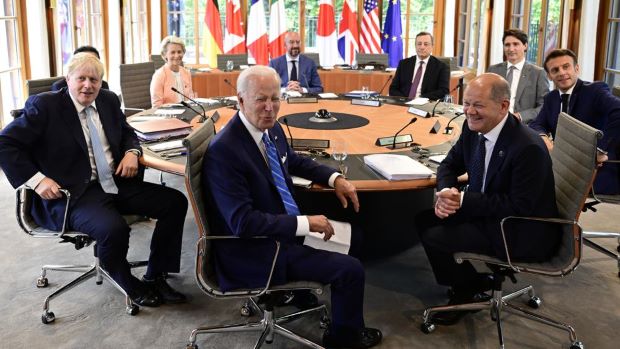Despite the focus on Ukraine, G7 leaders detail a new plan to target China’s influence

By Jim Tankersley
ELMAU, Germany – Leaders of the Group of 7 nations detailed a plan on Sunday (26) to invest in infrastructure projects in less-wealthy countries around the world, an initiative meant to counter China’s expanding influence from its Belt-and-Road Initiative.
The announcement came a year after President Joe Biden urged his fellow leaders at a G-7 meeting to act boldly to battle China’s growing influence in Latin America, Africa and parts of Europe, and it was a notable departure in tone at a meeting that was largely focused on addressing the impact and response to Russia’s war in Ukraine.
But it was unclear on Sunday whether Biden and his counterparts would actually deliver anywhere near enough money to match the scale of China’s efforts, which have been underway for years.
Biden administration officials said the effort would seek to mobilize $600 billion across the G-7 nations, to help less-wealthy countries finance spending on a wide range of projects for low-carbon energy, child care, advanced telecommunications, water and sewer upgrades, vaccine deployment and more. Biden said $200 billion of the commitment would come from the United States.
An administration official told reporters that the program would prioritize investing in projects that could be completed quickly and efficiently — and that meet stringent labour and environmental standards. Officials also sought to cast the new program as far more likely to help emerging economies achieve faster and more sustainable economic growth than Chinese loans that the administration has cast as “debt traps” for poorer countries.
But much of the G-7’s promised money announced Sunday is not direct government spending — it is a mix of public and private money, which has no guarantee of materializing.
Biden said that the United States’ planned contribution would include public and private capital. Administration officials would not specify how much of the $200 billion was meant to come from the private sector. An administration official told reporters that the government’s portion of the funding would essentially include projects that are already in the pipeline and money that has already been directed to federal agencies.
Other countries appeared to be using similar math to reach their pledges for the newly named Partnership for Global Infrastructure and Investment. (Biden had initially sought to call the program Build Back Better World, a reference to the sweeping economic legislation he tried and failed to push through Congress last year.)
A fact sheet released by the White House said that members of the G-7 would together “seek to mobilize hundreds of billions in additional capital from other like-minded partners, multilateral development banks, development finance institutions, sovereign wealth funds, and more.”
The fact sheet listed several projects already in development that make up a first tranche of the program’s aid. They include $3.3 million to help build a vaccine-manufacturing facility in Senegal, a $2 billion solar-energy project in Angola and $14 million to support development of an advanced nuclear reactor in Romania.
-New York Times

